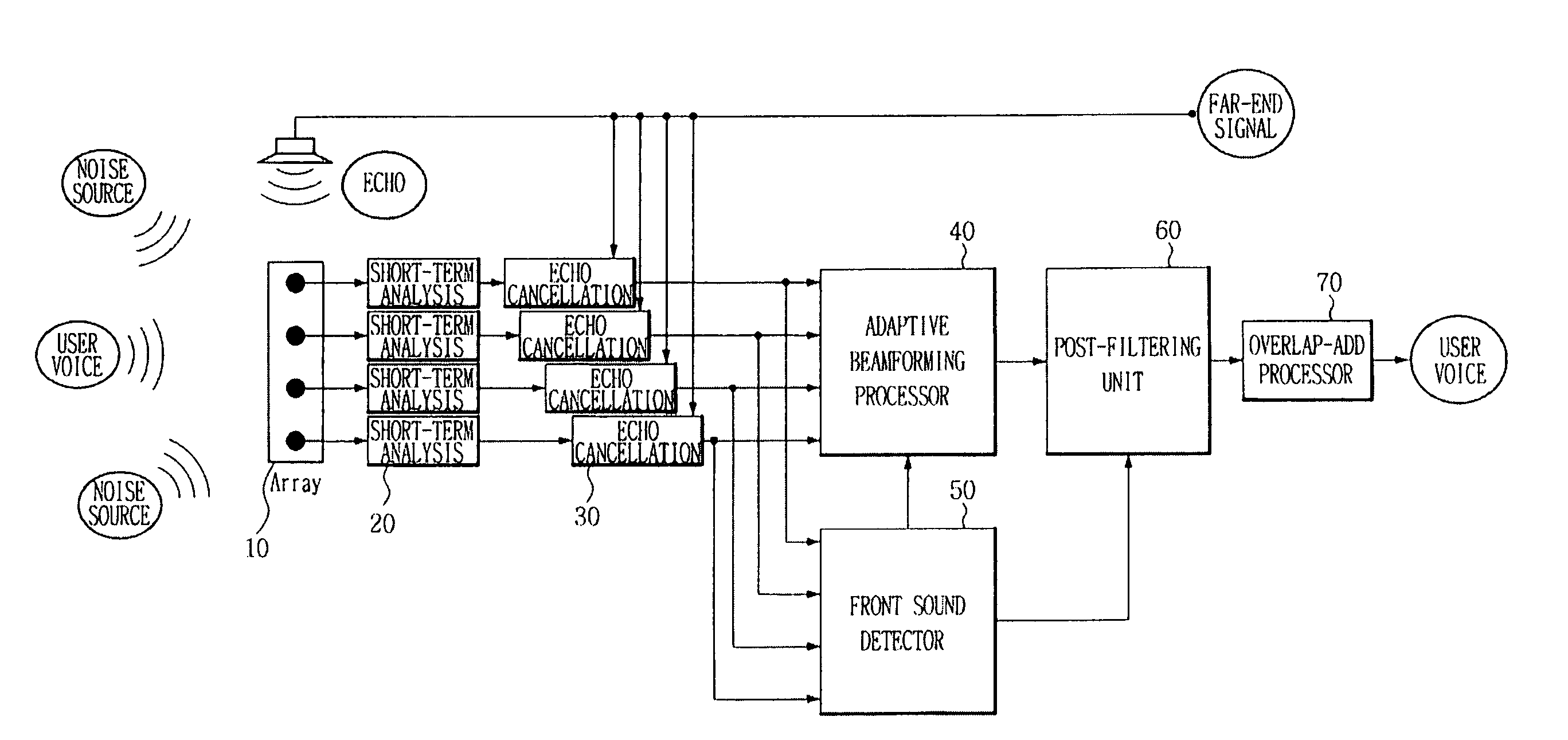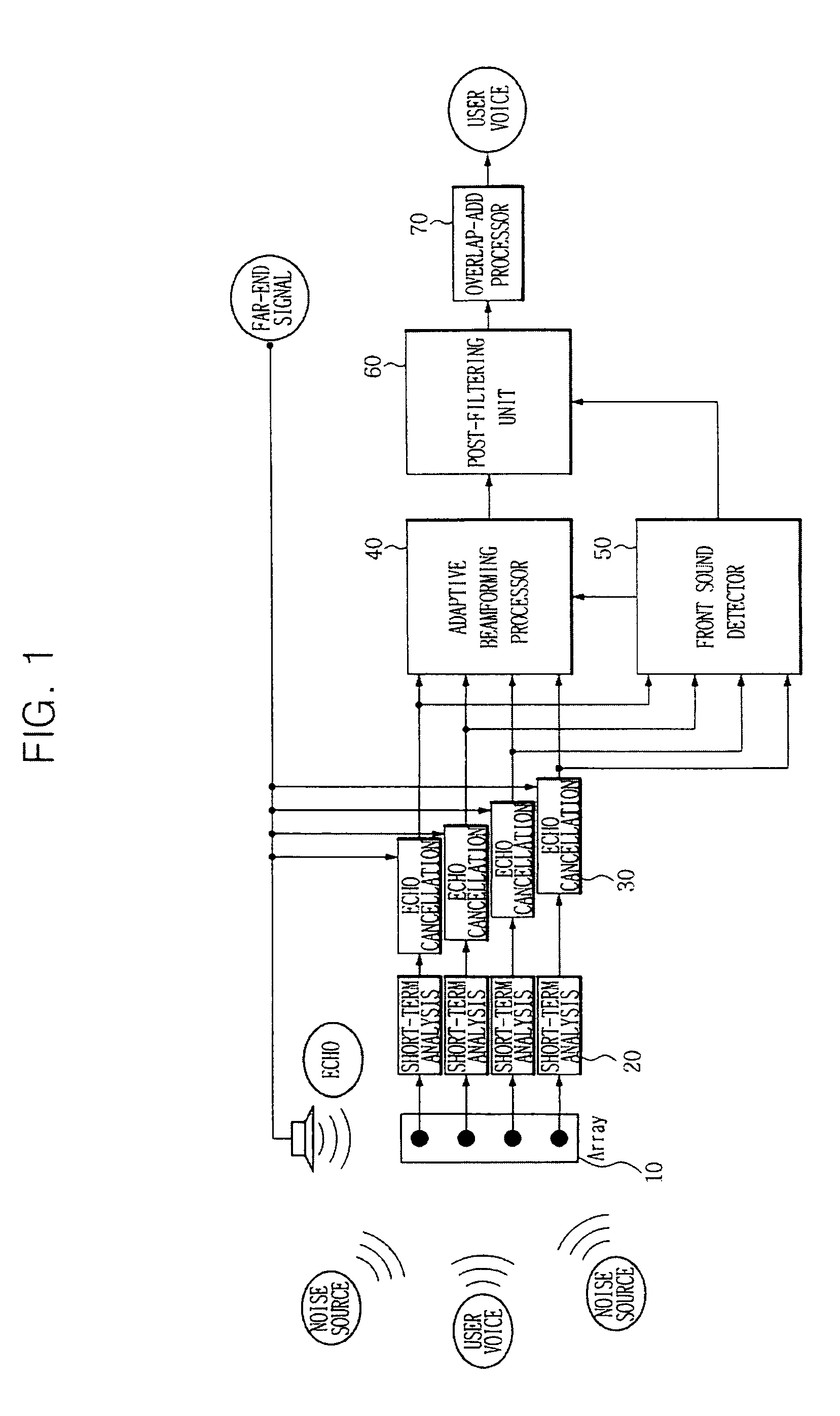Adaptive mode control apparatus and method for adaptive beamforming based on detection of user direction sound
- Summary
- Abstract
- Description
- Claims
- Application Information
AI Technical Summary
Benefits of technology
Problems solved by technology
Method used
Image
Examples
Embodiment Construction
[0024]FIGS. 1 through 6, discussed below, and the various embodiments used to describe the principles of the present disclosure in this patent document are by way of illustration only and should not be construed in any way to limit the scope of the disclosure. Those skilled in the art will understand that the principles of the present disclosure may be implemented in any suitably arranged communication system.
[0025]One condition for improving performance of adaptive beamforming is that adaptation of an adaptive filter used in adaptive beamforming be stopped when a user speaks. This is determined by adaptive mode control.
[0026]FIG. 1 illustrates a block diagram of a directional noise canceling system using a microphone array. The noise canceling system includes at least one microphone 10, a short-term analyzer 20 connected to each microphone, an echo canceller 30, an adaptive beamforming processor 40 that cancels directional noise and turns a filter weight update on or off based on w...
PUM
 Login to View More
Login to View More Abstract
Description
Claims
Application Information
 Login to View More
Login to View More - R&D
- Intellectual Property
- Life Sciences
- Materials
- Tech Scout
- Unparalleled Data Quality
- Higher Quality Content
- 60% Fewer Hallucinations
Browse by: Latest US Patents, China's latest patents, Technical Efficacy Thesaurus, Application Domain, Technology Topic, Popular Technical Reports.
© 2025 PatSnap. All rights reserved.Legal|Privacy policy|Modern Slavery Act Transparency Statement|Sitemap|About US| Contact US: help@patsnap.com



